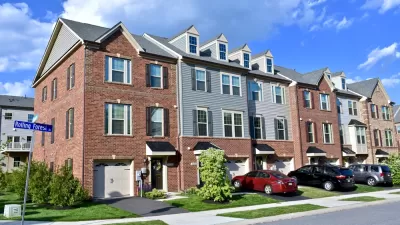To fix California’s housing crisis, a statewide mandate is needed that requires 20 percent of all new housing, rental units, and those for sale be set aside for low-income families, according to affordable housing developer Murtaza H. Baxamusa.
A lack of oversight by the state needed to regulate the housing market is benefiting developers and landlords and hurting residents in need of an affordable place to live.
The biggest bump in housing costs is related to land value, a plus for landlords and speculative investors, according to Murtaza H. Baxamusa, a San Diego-based developer of affordable housing. A decade of decline in apartment construction and the push by developers to build pricier housing rather than needed entry-level homes also has benefitted developers and landlords at the expense of California renters and homebuyers, he writes.
A statewide inclusionary mandate that 20 percent of all new housing, rental units and those for sale, be affordable to low-income families is needed to improve the crunch.
Enforcement of regional housing mandates, a state intervention for federally subsidized at-risk housing, and rent stabilization and housing assistance programs are some of the measures needed to achieve this mandate, Baxamusa writes.
"Inclusionary housing creates balanced communities with enhanced economic opportunity for lower-income families to escape a cycle of poverty. There is no more compelling economic interest for the state today, than the fact that it is too expensive for our workforce to live here."
FULL STORY: How to fix California’s Housing Affordability Crisis

Maui's Vacation Rental Debate Turns Ugly
Verbal attacks, misinformation campaigns and fistfights plague a high-stakes debate to convert thousands of vacation rentals into long-term housing.

Planetizen Federal Action Tracker
A weekly monitor of how Trump’s orders and actions are impacting planners and planning in America.

In Urban Planning, AI Prompting Could be the New Design Thinking
Creativity has long been key to great urban design. What if we see AI as our new creative partner?

Pedestrian Deaths Drop, Remain Twice as High as in 2009
Fatalities declined by 4 percent in 2024, but the U.S. is still nowhere close to ‘Vision Zero.’

King County Supportive Housing Program Offers Hope for Unhoused Residents
The county is taking a ‘Housing First’ approach that prioritizes getting people into housing, then offering wraparound supportive services.

Researchers Use AI to Get Clearer Picture of US Housing
Analysts are using artificial intelligence to supercharge their research by allowing them to comb through data faster. Though these AI tools can be error prone, they save time and housing researchers are optimistic about the future.
Urban Design for Planners 1: Software Tools
This six-course series explores essential urban design concepts using open source software and equips planners with the tools they need to participate fully in the urban design process.
Planning for Universal Design
Learn the tools for implementing Universal Design in planning regulations.
planning NEXT
Appalachian Highlands Housing Partners
Mpact (founded as Rail~Volution)
City of Camden Redevelopment Agency
City of Astoria
City of Portland
City of Laramie





























